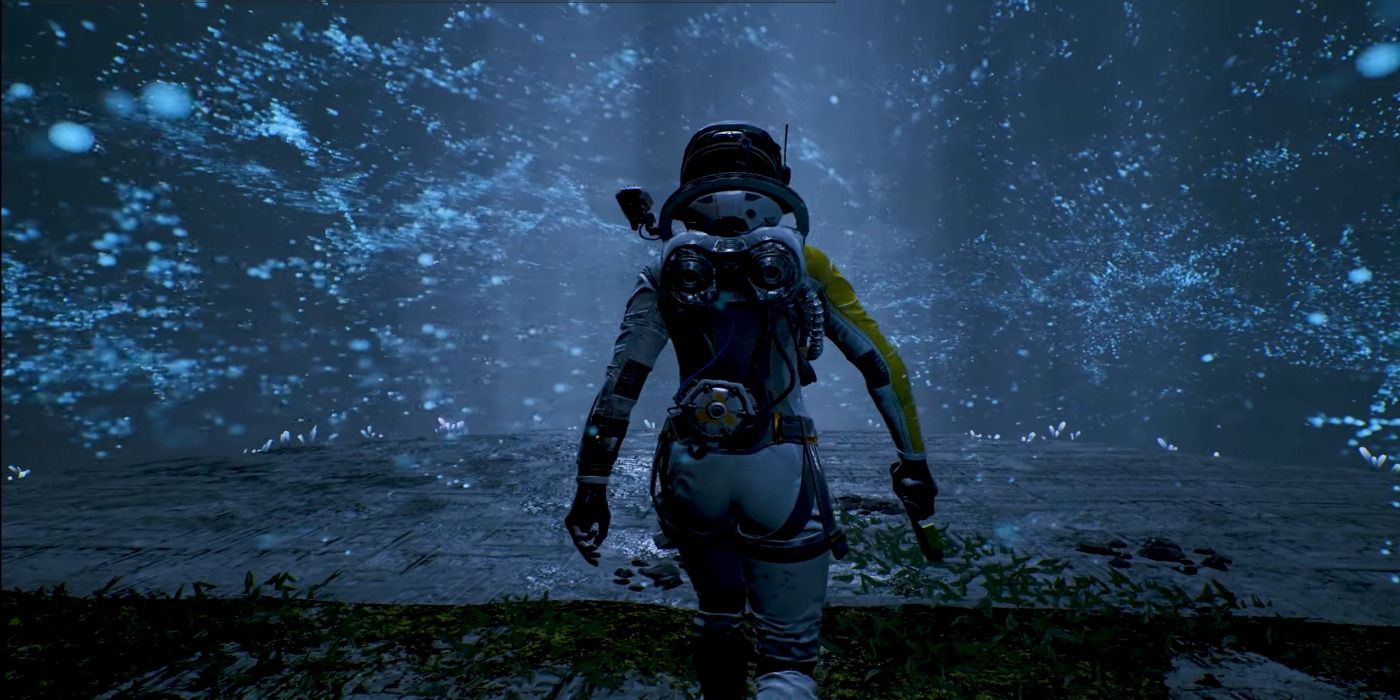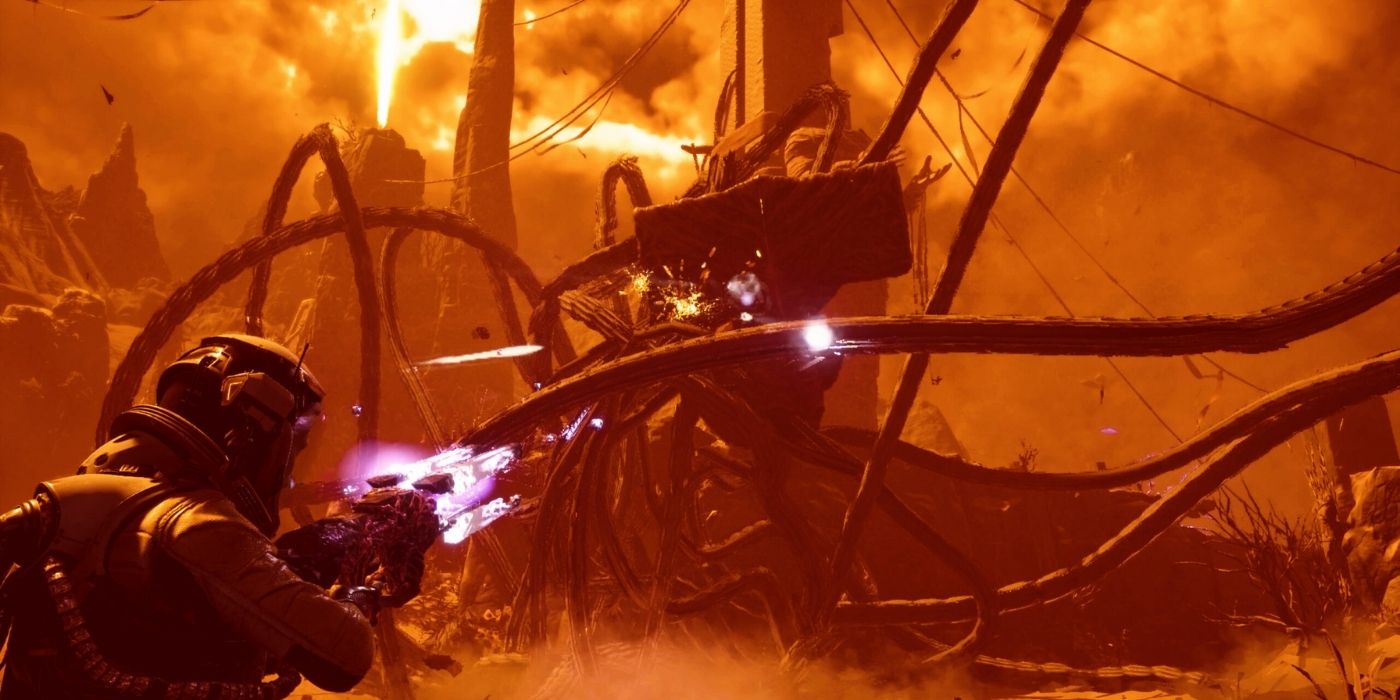

As new items unlock, they appear in chests scattered throughout the environment. Part of the reason it stays fresh is that every run features different decisions. "Returnal" is remarkably designed purely in how fresh and challenging its gameplay develops.

But it’s somehow not as hard to take as the “Souls” games because one can feel palpable advancement even returning to the same starting point every time. Death still has an incredible impact, especially as the length Selene needs to travel from the Helios gets longer and longer. It’s hard to explain exactly how, but my Selene was definitely more powerful with each death, learning new secrets, gaining new tech, and figuring out new ways to attack her enemies. And yet progress is made every time through tech upgrades and unlocked items that will then pop up more often in the environment. It’s also a game like “Bloodborne” or “Dark Souls” wherein death is a major part of the experience. It also adds to the sense that this is more out of your control than most ordinary games. Yes, you have to learn enemy attack patterns that don't change, but the sense that the planet itself is transforming every time adds to the tension. Video games are so often based on memorizing patterns-roguelike games like “Returnal” challenge that approach. It adds greatly to the sense of isolation and fear that you’re never quite sure what’s coming next.

The item locations and even what items drop shift. There are a limited number of “rooms” in each biome on this planet but the order in which Selene encounters them is never the same. And not only that but the first encounter she has will be different every time. All progress, all found items, all weapons-gone. Every time Selene dies, she wakes up back at that crash site, which remains mostly the same each time. “Returnal” is built on a decades-old structure named “Roguelike,” wherein rooms and levels are procedurally-generated differently every time you play it. She’s not only somehow been here before but died here before. She looks at the tag on the fallen soldier. As she investigates a signal somewhere on the planet, Selene quickly comes across the body of another pilot that’s dressed in a similar space suit. You play a solo pilot named Selene, who crash lands her ship the Helios on the planet Atropos in the opening scene of a game that instantly feels like it could take place on the same distant orb as Ridley Scott’s “ Prometheus.” (Longtime gamers will also likely notice what feel like nods to “Metroid” in character and even map design.) As you leave your spacecraft to explore, you find signs of a lost race of creatures that clearly designed where you are, and the monstrosities they left behind to kill you.


 0 kommentar(er)
0 kommentar(er)
